Lecture
I want to say right away that there is no water here about the history of information carriers, and only the necessary information. In order to better understand what the history of information carriers is, I strongly recommend that you read everything from the category History of computer technology and IT technologies
Information carrier (information carrier) - any material object or medium containing information capable of storing the information entered on it for a sufficiently long time in its structure - stone, wood, paper, metal, plastics, silicon (and other types of semiconductors), tape with magnetized layer (in reels and cassettes), plastic with special properties (for optical recording), electromagnetic radiation, etc.
Many of the devices that were first used for input and output of data were invented before the advent of computers, and then they were simply adapted to computers.
The first carriers of information were the walls of the caves. Rock carvings and depicted animals, hunting and everyday scenes. Rock carvings were intended to convey information, served as a simple decoration, These are the oldest media known now.
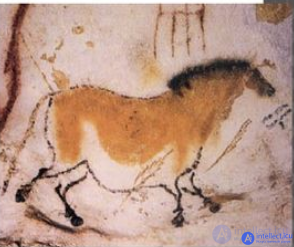
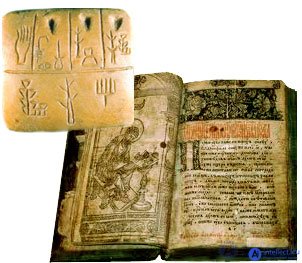
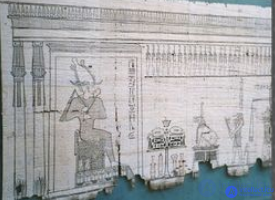

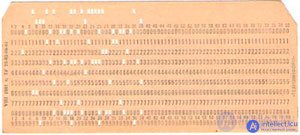
Punch cards are one of the oldest information carriers.
Jean-Baptiste Falcon made an improvement to the Boschot loom: the control of the machine by means of a roll of perforated paper tape was replaced by a set of individual cards attached to each other. This made it possible to quickly make changes to the program. Joseph-Marie Jacquard continued to work in this direction and created special maps for controlling weaving looms in 1801. Patented in 1884
A punched card (from Lat. Perforo - I punch and Lat. Charta - a sheet of papyrus; paper) is an information carrier intended for use in automatic data processing systems. Made of thin cardboard, a punched card represents information by the presence or absence of holes in certain positions of the card (WIKIPEDIA, punched card).
Since the correctness of the results obtained by the computer depended on strict adherence to a certain sequence of inserting punched cards, the likelihood of errors was high. If, for example, an unlucky operator accidentally dropped a deck of cards and the order of their arrangement was violated, then the solution of the problem became impossible. Over time, serial numbers began to be placed on the back of the punched cards in order to facilitate the restoration of the deck in its original order.
A brief history of punched cards
1725 in the history of punched cards
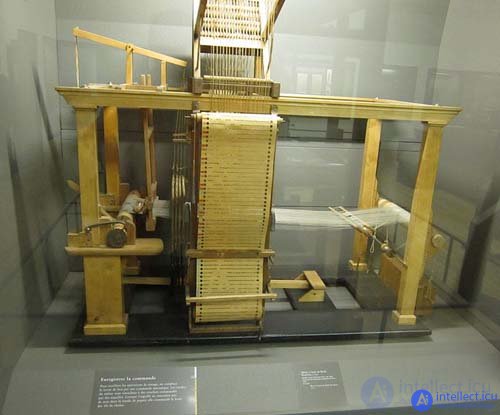
Loom B. Bochon at an exhibition in Paris at the Museum of Arts and Crafts
1728 in the history of punched cards
Jean-Baptiste Falcon made an improvement to the Boschot loom: the control of the machine by means of a roll of perforated paper tape was replaced by a set of individual cards attached to each other. This made it possible to quickly make changes to the program.
Jacquard perfected looms (Boschot-Falcon), which were not stable and required several people to operate the machine. Jacquard looms are considered to be the first industrial application of semi-automatic machines for controlling fabric patterns. The punched cards were connected to each other and looked like large, wide punched tape.
In 1801, Jacquard exhibited his inventions at an industrial exhibition in Paris. The new technology used in looms was declared state property in 1806.
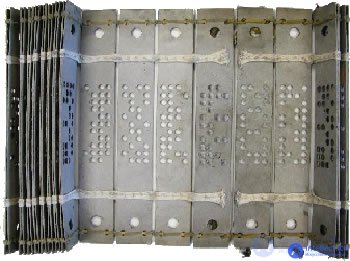
Jacquard cards
Punch cards were first used in the "intelligent machines" of the collegiate councilor Semyon Nikolaevich Korsakov (14 (25) .01.1787 - 01 (13) .12.1853), mechanical devices for information retrieval and classification of records.
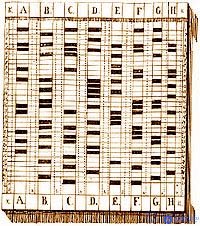
Perforation table S. N. Korsakov
1834 in the history of punched cards
In Babbage's analytical machine, punched cards were used to enter instructions (programs).
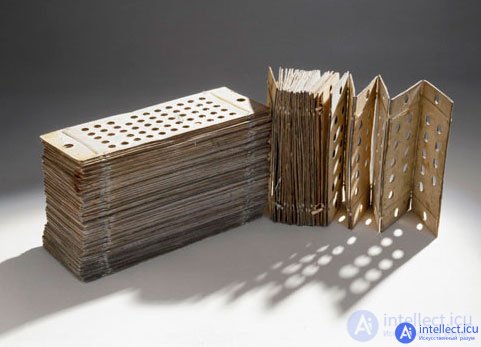
Babbage Punch Cards for Analytical Engine
1884 in the history of punched cards
American engineer Herman Hollerith took out a patent "for a census machine." The invention included a punch card and a sorting machine.
The punch card was a piece of cardboard about 90 mm by 215 mm (the size corresponded to the size of a dollar bill at the time) with round holes.
The first set of equipment did not have a special puncher (a device for preparing information on punched cards), but used a conductor's punch in trains. The cards were sorted electrically, but feeding, removing and transferring to the sorting box was done manually. The use of this system has dramatically accelerated the processing of statistics. Hollerith's first system only allowed for counting the number of cards with certain punched combinations. The cards themselves were of different sizes for each application, and the burn zones could be placed in different parts of the map.
The use of a special punch-pantograph made it possible to improve the process of punching cards and increase the speed of work up to about 500 cards per day.
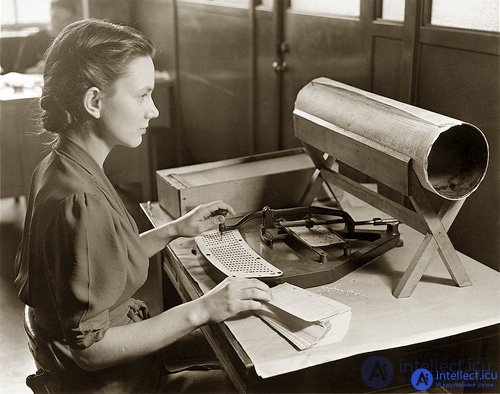
Perforator-pantograph
The requirement to summarize data punctured on cards is reflected in Hollerith's new integrating punch.

Punch card, 1885
The size of the cards, the location and the size of the round punches were brought to one standard, which remained the same for most machines.
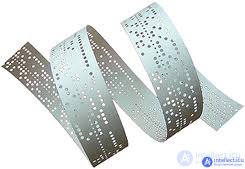
Punched tape is one of the oldest information carriers. Punched tapes could store up to several tens of kilobytes of information, which is much more than a punched card.
For the first time, the idea of controlling a weaving machine using a perforated paper tape was expressed (implemented) by Basile Bouchon from Leon in 1725.
Currently, punched tape in the form of a punched tape information carrier are no longer used.
Punched tape is an information carrier in the form of a narrow thin tape made of paper or plastic. Information on punched tape was recorded by robbing holes (perforations). Rows of holes located across the punched tape formed lines. On each line the code of one character was written in the form of a paper tape with holes. In the middle of the belt, there is a track with a smaller perforation, the so-called "transport track". It serves to move the belt using a gear wheel. Each horizontal row of holes on the punched tape corresponds to one letter, character, or space between them.
Computer punched tapes were 7 or 8 rows wide and used ASCII encoding for writing. Due to the simplicity of input-output devices, punched tape has become widespread in computer technology.
The disadvantage of paper punched tapes is low mechanical strength and, therefore, a low service life and a limited speed of transfer during recording (perforation) and playback.
Punched tape was the cheapest medium of information. The equipment was relatively simple and cheap, with the help of which information was recorded and read from it.

Short story
1846 in the history of punched tape
Perforated tapes were first used in 1846 by the inventor of the chemical telegraph, Alexander Bain (October 1811 - 01/02/1877). Appropriately positioned punched holes marked Morse code dots and dashes. This machine could transmit up to 252 characters in 52 seconds (about 300 words per minute), i.e. five to six times more than when manually working with a telegraph key.
The telegraph was called chemical because the paper tape was moistened with a mixture of ammonium nitrate and potassium ferrocyanide. Further.
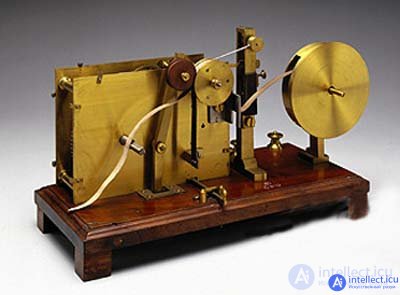
Bane's Chemical Telegraph, 1850
1857 in the history of punched tape
Sir Charles Wheatstone FRS (06.02.1802 - 19.10.1875), continued the work on improving the telegraph, which began Alexander Bane. As a result, Sir Charlize developed the first industrial automatic telegraph device, which used paper tapes as a means of preparing, storing and transmitting data. Sir Charles's paper tape used two rows of holes to represent Morse code.
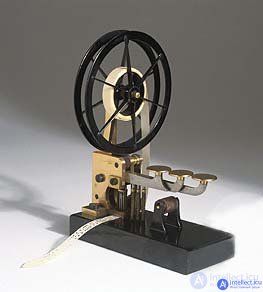
Punched tape by C. Wheatstone, 1958
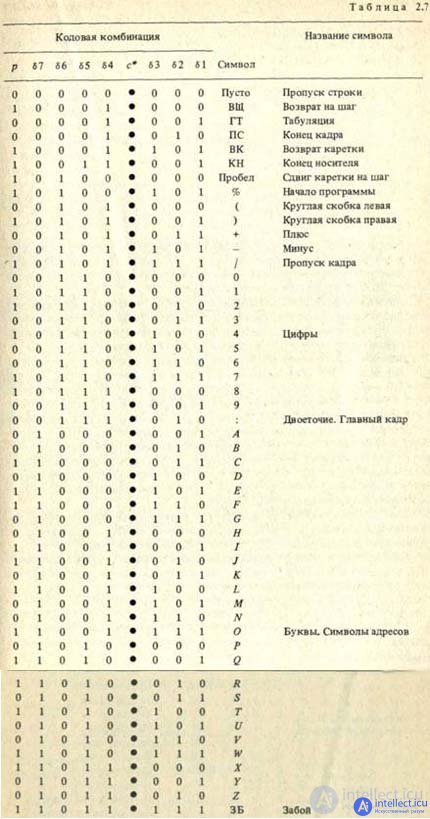
Punched encoding table
1869 in the history of punched tape
Russian inventor Pyotr Pavlovich Knyagininsky created the world's first “automatic typesetter” - a typesetting machine with programmed control from punched tape. His machine “read” the text, which was a paper tape with combinations of holes corresponding to each letter and sign (the so-called “dispatches”), and automatically (using an electromagnetic mechanism) produced a set of metal letters. In 1870, Knyagininsky's car was delivered to St. Petersburg and demonstrated at the Manufactory Exhibition. Later, Knyagininsky was in Moscow with his car. They showed interest in his car, but no one supported the inventor in his desire to find practical use for it.
P.P. died. Knyagininsky is in poverty, and his car has disappeared without a trace. Meanwhile, Knyagininsky's idea was very progressive. The principle of automation of typesetting with the help of perforated tape was used in the 90s of the 19th century when creating a line-casting machine.
1936 in the history of punched tape
For the Z2 computer model, K. Zuse came up with a very ingenious and cheap input device. K. Zuse began to code instructions for the machine, punching holes in the used 35 mm film.

35mm photographic film
1944 in the history of punched tape
Work on the Mark I computer was completed in 1944. Punched tape was used in the input-output devices of this computer.
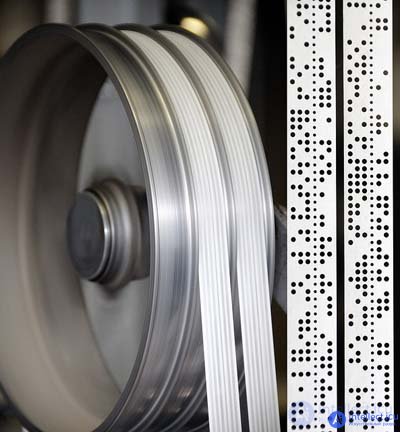
1906 in the history of punched cards
James Powers proposed electric powered mechanical rock drills.
Interesting Facts
Powers graduated from the Technical School in Odessa and worked for some time in the mechanical workshop of Odessa University.
Arriving in America at the age of eighteen, Powers settled in Brooklyn and worked for such well-known firms (in the United States of the late 19th century) as the Carrin Machine Company, Western Electric and Bergman's Electrical Works.
In 1890, James Powers joined the Bureau of the Census as a Perforating Technician (Hollerith).
Powers proved himself to be a talented inventor at the Census Bureau who made many improvements to Hollerith's machines. In particular, the hand lever in the Hollerith automatic sorting device was replaced with a foot pedal that freed the operator's hands, and in 1906 the dial counters were replaced with paper printers.
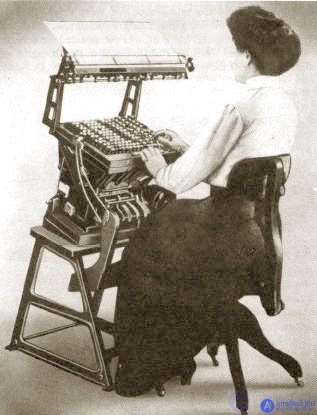
Powers Punch, 1910
The machine shown above is built on the principle of a typewriter with 240 keys painted in different colors (although there are 288 positions on a punched card). There was an automatic feed of punched cards. The punching operation was carried out simultaneously for the entire punched card, and not for individual holes, which made it possible to correct errors in time without re-punching the cards.
1928 in the history of punched cards
IBM introduced a new card with rectangular punches, 12 lines and 80 columns, card size 7-3 / 8 "3-1 / 4inch (187.325 by 82.55 mm), card thickness 0.007" (0.178 mm). The corners were initially sharp.
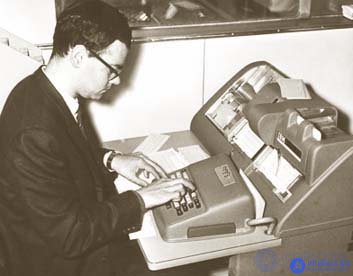
Preparing punched cards on a punch
1964 in the history of punched cards
Punch cards with rounded corners appeared.
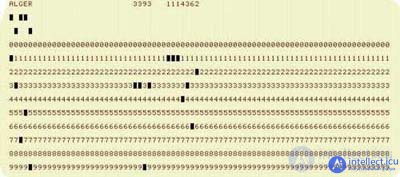
For the convenience of working with text data, punchers appeared that print on the top field of a punched card the text punched on the card. The site https://intellect.icu says about it. This made it possible to visually control the information prepared on a punched card.
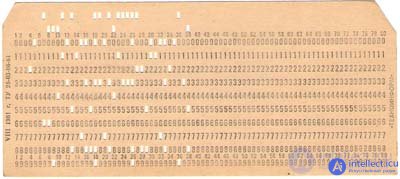
Punch cards with sharp corners remained in the Soviet Union

magnetic disk - invented by IBM
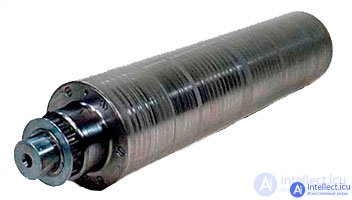
Magnetic drums were large metal cylinders coated with a ferromagnet, around which a number of readheads were located, each on its own track. The speed of the device was dependent on the speed of rotation of the drum. The heads themselves could not move arbitrarily, and the controller had to wait most of the time for the necessary data to appear under the desired head when the drum was turned.
Magnetic drums were widely used in the 1950s and 1960s. For many computers, the drum was the main memory in which programs and data read from punched tapes or punched cards were located.
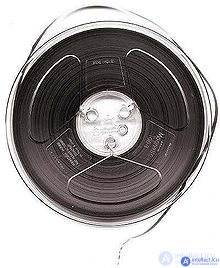
Magnetic tape is a sequential access storage medium in the form of a thin flexible plastic tape coated with a magnetic material.
The beginning of the history of magnetic tape as a means of storing information can be considered 1898, when the Danish physicist V. Paulsen first demonstrated a device, the so-called "telegraph", which allows recording and reproducing speech signals .
used in IBM system 701
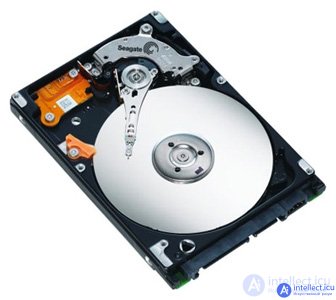
A magnetic disk (English hard drive) is an information carrier, which is a disk, the surfaces of which are covered with magnetic material. To read and write data, the magnetic disk is placed in a special device - a disk drive, equipped with magnetic read-write heads. The disc is spinning at high speed in the drive. Data is written on the surface of the disc along concentric circles called tracks. To select the desired track, the movable head is installed in the appropriate position. In order to increase the amount of memory, several disks are combined into a package of magnetic disks.
The magnetic disk appeared in the mid 50s of the 20th century and immediately found widespread use due to their very high technical characteristics.
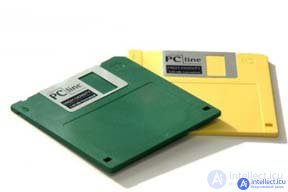
In 1967, IBM again "delighted" the computing community by introducing the first floppy disk to the market . It was an 8-inch floppy disk covered with a magnetic substance, enclosed in a plastic case. Users quickly realized that floppy disks were faster, cheaper, and more compact than stacks of punched cards to download data to a computer .
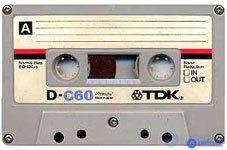
Compact cassettes (English magnetic tape) are a storage medium on magnetic tapes.
The first compact cassettes were produced by Philips in 1963. Relatively cheap and easy to use, the compact cassette has long been the most popular recordable audio medium (from the early 1970s to the late 1990s). At the same time, home computers appeared, in which compact cassettes were used as a medium for entering information. Currently, the compact cassette as a carrier is not used (or is hardly used).
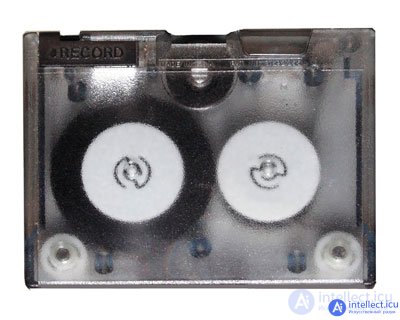
Streamer - magnetic tapes placed in miniature plastic cartridges. They appeared in the 1980s. They differed from their predecessors, reels and compact cassettes, with a long life, portability and convenience.
Streamers allow a huge amount of information to be recorded onto a small cassette tape. The hardware compression built into the streamer allows the information to be automatically compressed before it is written and restored after reading, which increases the amount of stored information.
Today tape cartridges such as 800 GB LTO Ultrium are used for information support of servers, although in recent years, data transfer from hard drive to hard drive is increasingly used.
1985 in the history of punched cards
IBM has closed its last punch card factory, a storage medium that is largely out of use.

A compact disc is an optical storage medium in the form of a plastic disc. Digital data is stored on this plastic medium in the form of microdepressions on its mirrored surface. Recording and reading of information is carried out using a laser. The CD was originally created for digital storage of audio information, but is now widely used as a general purpose storage device.
The first CD was developed in 1979 by Philips and Sony. Over the next decades, the optical disc has undergone many changes, its evolutionary chain includes DVD, HD-DVD and Blu-ray. Despite the variety of types of CDs, they all share some common features, or characteristics.
In the late 1990s, optical discs finally fell in price and finally relegated floppy disks to the background.
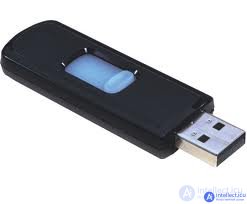
Flash memory is a permanent storage device in the form of microcircuits based on semiconductor technology.
Due to its compactness, low cost, mechanical strength, large volume, speed of operation and low power consumption, flash memory is widely used in digital portable devices and storage media.
In the early 1980s, Toshiba invented NAND flash memory, but the technology did not become popular until a decade later, following the advent of digital cameras.
|
|
DISKETS |
|
Magnetic tape (English magnetic tape) is a portable storage medium used for multiple recording and storage of data, which is a disc placed in a protective plastic case, covered with a ferromagnetic layer. A floppy drive is used to read floppy disks. In domestic developments there was an abbreviation - HMD , corresponding to the term "flexible magnetic disk". (WIKIPEDIA, diskette) |
|
Short story
|
|
1967 year |
In 1967, IBM introduced the first floppy disk. IBM began developing floppy disks after creating its first hard disk in 1960. From that moment on, the era of disk drives began. However, in 1967 only an experimental model was developed. This work was carried out by a group of engineers led by Alan Shugart (09/27/1930 - 12/12/2006), and the idea of using a floppy disk (a prototype of an 8-inch floppy disk) and a protective cover with a fabric pad was proposed by David Noble. |
|
1971 year |
After numerous tests and additions, in 1971 IBM introduced 8-inch floppy disks to the market, which consisted of a simple plastic circle coated with iron oxide and enclosed in a cardboard sleeve. However, the first floppies had some pretty serious limitations. This was due to the fact that initially, drives were created as a read-only device to store firmware and diagnostic programs for large computer systems. The use of the recorded programs allowed computer operators to quickly perform simple actions with the system, just loading the required set of commands from a floppy disk. In addition, the data area on the first floppy disks was only on one side. The amount of information stored on them was less than 100 Kb.
|
|
1976 year |
In 1976, the Shugart Association introduced new floppy disk drives that were analogous to 8-inch floppy disks, but their size was 5.25 inches. Initially, these floppy disks were designed only in low density format on one side, and contained about 100 KB of information. In a joint effort with Dysan Corporation, building on the already mastered IBM technologies, the association produces 5.25-inch double-sided floppy disks, as well as media with doubled density. This made it possible to achieve the volume of recorded information of the order of 1.2 MB. They were actively promoted by IBM, and soon these floppy disks became an integral part of IBM AT compatible personal computers. There were three types of 5.25 floppy disks: SS (Single Side) 160 KB, DS (Double Side) 360 KB and DH (Double Side High Density) 1.2 MB.
|
|
1981 year |
Modern 3.5-inch floppy disks were introduced by Sony in the early 1980s. After that, a big war of formats began, everyone understood that if their format was adopted as standard, then economic dominance was guaranteed. 2.0, 2.5, 2.8, 3.0, 3.25 and 4.0-inch formats were received from various companies. However, 3.5 floppy disks completely duplicated the technology of their predecessors, more precisely, they used the technology of the second generation of 8-inch floppy disks, which played a role, and already in 1984 IBM launched a modified invention on the market and set the standard for floppy disks. The principal difference between a 3.5-inch floppy disk is its hard plastic case, the window for the floppy's reading heads is closed by a sliding metal shutter that opens when it is inserted into the disk drive. Over the next two decades, no changes occurred in this generation of floppy disks. |
|
2011 |
Sony officially ceased the production and sale of floppy disks in March 2011.
|
|
MAGNETIC DISCS |
|
Hard disk drives (HDD - HDD - Hard (Magnetic) Disk Drive) - is a non-volatile, rewritable memory device, based on the principle of magnetic recording. The HDD uses one or more plates on one axis. |
|
Short story
|
|
The magnetic drum - the grandfather of modern hard drives - emerged as a way to quickly access information.
|
Five stages of development of HDD technologies :
|
|
1956 year |
Released the IBM 350 hard drive as part of the first production computer IBM 305 RAMAC. The drive occupied a box the size of a large refrigerator and weighed 971 kg, and the total memory capacity of the 50 thin discs covered with pure iron with a diameter of 610 mm rotating in it was about 5 million 6-bit bytes (3.5 MB in terms of 8-bit bytes) ... Produced until 1957.
|
|
1961 year |
IBM invents a head for hard drives that "flies" on an air cushion or on "air bearings". |
|
1963 year |
The first removable hard drive "1311" from IBM, equipped with six 14-inch platters and 2.6MB.
|
|
1966 year |
IBM introduces the first disc to use a ferrite-coil recording head. |
|
1973 year |
IBM announces 3340, the first modern Winchester, with sealed mounting, lubricated spindles, and low head mass.
|
|
1978 year |
First patent on RAID (Redundant Array of Independent Disks) technology. |
|
1979 year |
The 3370 from IBM uses seven 14-inch platters for 571MB storage, the first disk to use thin-film heads.
|
|
1980 year |
IBM unveils first gigabyte hard drive. It is about the size of a refrigerator, weighs about 550 pounds, and costs $ 40,000.
Seagate launches first 5.25-inch hard drive. |
|
1981 year |
Shugart Associates joins NCR to develop an intelligent drive interface called Shugart Associates Systems Interface (SASI), the predecessor to SCSI (Small Computer System Interface). |
|
1982 year |
Western Digital announces the first Winchester single-chip hard drive controller (WD1010). |
|
1983 year |
Rodime launches first 3.5-inch hard drive; RO352 includes two platters and 10MB storage.
|
|
1984 year |
Western Digital builds the first hard drive controller card for the IBM PC / AT - and sets the standard. |
|
1985 year |
Control Data, Compaq Computer, and Western Digital are collaborating to develop a 40-pin IDE (IDE = Intelligent Drive Electronics, better known as Integrated Drive Electronics) interface. Imprimis integrates the first hard disk controller into the drive. Quantum introduces the Plus Hardcard, which provides a hard drive expansion without an empty bay or separate controller card. Western Digital launches the first ESDI (Enhanced Small Device Interface) controller cards, providing larger capacities and faster hard drives for use in personal computers. |
|
1986 year |
Official SCSI specifications released; Apple Computer Mac Plus computers are among the first to use the new interface. |
|
1988 year |
Prairie Tek launches "220", the first 2.5-inch hard drive for the growing laptop market, using two platters for 20MB of storage. Connor introduces the first 3.5-inch hard drive that is still a common form factor today. Western Digital buys assets of Tandon Corporation with perspectives for production of IDE drives. |
| 1989 year | In 1989, Toshiba introduced a different kind of flash memory - NAND. It differed from NOR in that it was based not on a two-dimensional matrix, but on a three-dimensional array. In other words, at the intersection of a row and a column there is not one, but a whole block of cells. Compared to NOR, the reading algorithm in NAND memory is significantly more complicated, which leads to a slowdown in operation. Nevertheless, this design allows for much larger chip capacities. NOR memory has always been used, for example, in the role of embedded memory in microcontrollers and in other areas where volume is not so important. In contrast, NAND chips are used in flash drives and solid state drives - where the emphasis is precisely on capacity. |
|
1990 year |
Western Digital unveils its first 3.5-inch Caviar IDE hard drive. |
|
1991 year |
IBM introduces the 0663 Corsair, the first disc with a thin-write magnetoresistive (MR) head. It includes eight 3.5-inch platters and stores 1GB. Integral Peripherals' 1820 Mustang uses a single 1.8-inch platter for 21MB storage. |
|
1992 year |
Seagate is the first company on the market to ship 2.1GB hard drives (7200-rpm Barracuda). Hewlett-Packard's C3013A Kitty Hawk drive uses two 1.3-inch platters for 2.1GB storage. |
|
1994 year |
Western Digital develops Enhanced IDE, an improved hard drive interface that breaks the 528MB / sec bandwidth barrier. |
|
1996 year |
IBM saves 1 billion bits per square inch. Seagate introduces the Cheetah family, the first 10,000 rpm hard drives. |
|
1997 year |
IBM unveils the first drive to use giant magneto-resistive (GMR) heads, the 16.8GB Deskstar 16GP Titan, which houses 16.8GB across five 3.5-inch platters. |
|
1998 year |
IBM announces its Microdrive, the smallest hard drive to date (the size of a current Compact Flash). It accommodates 340MB for one inch hard drive. |
|
year 2000 |
Maxtor buys competitive Quantum business. At the time, Quantum was the second largest drive manufacturer after Seagate. This acquisition makes Maxtor the world's largest hard drive manufacturer. Seagate launches its first 15,000 rpm hard drive, the Cheetah X15. |
|
2002 year |
Seagate's new design delivers 100 Gbps perpendicular magnetic density. Among many technological advances in 2002, Seagate successfully presented the Heat-Assisted Magnetic Recording demo. HAMR creates magnetic recording using laser-thermal assistance and ultimately achieves a recording density increase of more than 100 times. |
|
2003 year |
IBM sells Data Storage Division to Hitachi, ending its involvement in the development and marketing of HDD technologies. Western Digital introduces the first 10,000-rpm SATA hard drive, the 37GB Raptor, targeted at the enterprise. True, gamers master it just as quickly. |
|
2004 year |
The first 0.85-inch hard drive, MK2001MTN from Toshiba. Stores 2 GB on a single board. ProStor Systems patented RDX technology, proprietary hard drives housed in an ultra-reliable cartridge. The technology is quickly adopted by all the leading IT companies and are beginning to replace tape drives with it. IOMega is trying to regain its position in the removable storage market and advance its HDD-REV cartridge standard, but the moment has already passed. |
|
2005 year |
Toshiba introduces its MK4007 GAL, which contains 40GB on a single 1.8-inch board and uses perpendicular magnetic recording technology. At the end of 2005, the method of perpendicular recording was mastered. Up to this point, absolutely all hard disks have operated using the parallel recording method. What was the essence of the new technology? When using parallel recording, the magnetic particles are positioned in such a way that the magnetic directional vector runs parallel to the plane of the plate. This approach is the simplest, but it has one drawback: between domains (minimal cells of information), rather large buffer zones are required to reduce the forces of interaction between them.
On the contrary, when using the method of perpendicular recording, the vector of magnetic direction is already perpendicular to the surface of the disk, which significantly reduces the forces of interaction. Consequently, the required size of the buffer zones is also reduced. This allows you to increase the recording density. |
|
2006 year |
Seagate completes acquisition of Maxtor, further reducing the number of hard drive companies. Seagate's Momentus 5400.3 laptop hard drive is the first 2.5-inch model to use perpendicular magnetic recording (up to 160GB). The Seagate Barracuda 7200.10 was released, at 750 GB - the largest hard drive of the day. Western Digital is releasing the 10,000-rpm Raptor X SATA hard drive, expanding its capacity to 150GB and featuring a glittering transparent window that allows you to contemplate the operation of the device on custom computer cases. Cornice and Seagate unveil a 1-inch hard drive that can hold 12GB. |
|
2008 year |
Western Digital, despite the failures of competitors, successfully overcomes another barrier and releases the first 3.5 "2TB disk |
|
year 2009 |
SATA 3 specifications officially published. |
|
2010 year |
Western Digital is the first again with 3TB drives. |
|
2011 |
Thanks to aggressive marketing from disk and chipset manufacturers, SATA3 is gradually becoming the de facto standard. |
| 2013 year | A technology from Western Digital called HelioSeal, which uses helium instead of air inside the hard drive case. Due to the fact that helium is lighter than air, an ideal environment is created inside the HDD for plates moving at high speed. In addition, vibrations between the plates and the read head are reduced. The first "helium" hard drives were introduced at the end of 2013 under the name Ultrastar He6. And in early December, Western Digital announced the release of an updated line of Ultrastar He10 devices. These devices use the perpendicular recording method and their density is 816 Gbps per square inch. The Ultrastar He10 has a capacity of 10 TB. |
Comments
To leave a comment
History of computer technology and IT technology
Terms: History of computer technology and IT technology